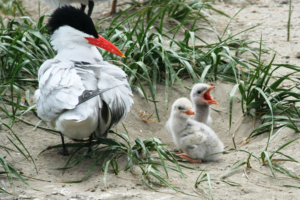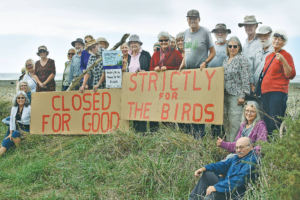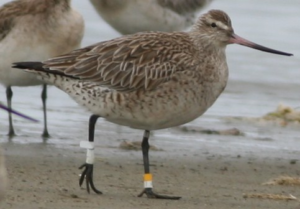Tasman District Council has a legal obligation under the New Zealand Coastal Policy Statement 2010 to protect these birds and their habitats.
Rototai


Both the Caspian Terns and the Banded Dotterels share a conservation status of ‘nationally vulnerable.’ There is a problem at Rototai with disturbance of these birds where they breed on the sandspit. They are disturbed by vehicles, dogs and horses. Better protection is urgently needed for Rototai through both Tasman District Council and the Department of Conservation. This would be in the assurance of some form of tenure where these birds have full protection from disturbance. This would mean prohibiting dogs, vehicles and horses. There are many other threatened and at risk bird species that use Rototai. It is a dynamic environment subject to change and TDC’s signage has never been altered to reflect the changes in the shoreline.
Taupata Stream Quarry

This habitat is home to the South Island Pied Oystercatcher, White Fronted Terns and several migratory species. All are at risk and threatened, some ‘nationally vulnerable.’ Taupata Stream Quarry is now a TDC freedom camping site where roosting birds have been displaced by freedom campers. Thebirds hug the shoreline while their roosting sites are used for tourist recreation. Tasman District Council must find an alternative camping site and prohibit dogs
Pakawau and Collingwood


Along with Farewell Spit, and Rototai, Pakawau and Collingwood contain wetlands of international importance. The tidal flats provide feeding grounds for many threatened, at risk and nationally vulnerable species and the Bar Tailed Godwit. These birds arrive in October, emaciated after a non-stop flight of 11,000 kilometres. They are ready to depart in April having gained condition to make yet another epic flight. They are subject to ongoing disturbance at all four sites mentioned. If they are unable to reach a desired level of body fat for their return to Alaska they will fail to complete their journey. Better dog control in these areas and controls on some vehicles is needed for their conservation.